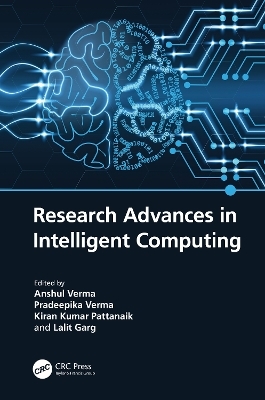
Research Advances in Intelligent Computing
CRC Press (Verlag)
978-1-032-34051-7 (ISBN)
Since the invention of computers and other similar machines, scientists and researchers have been trying very hard to enhance their capabilities to perform various tasks. As a result, the capabilities of computers are growing exponentially day by day in terms of diverse working domains, versatile jobs, processing speed, and reduced size. Now, we are in the race to make these machines as intelligent as human beings. Artificial intelligence (AI) came up as a way of making a computer or computer software think in a similar manner to the way that humans think. AI is inspired by the study of human brain, including how humans think, learn, decide, and act while trying to solve a problem. The outcomes of this study are the basis of developing intelligent software and systems or intelligent computing (IC).
An IC system has the capabilities of reasoning, learning, problem-solving, perception, and linguistic intelligence. IC systems consist of AI techniques as well as other emerging techniques that make a system intelligent. The use of IC has been seen in almost every sub-domain of computer science such as networking, software engineering, gaming, natural language processing, computer vision, image processing, data science, robotics, expert systems, and security. Nowadays, IC is also useful for solving various complex problems in diverse domains such as for predicting disease in medical science, predicting land fertility or crop productivity in agricultural science, predicting market growth in economics, and weather forecasting.
For all these reasons, this book presents the advances in AI techniques, under the umbrella of IC. In this context, the book includes recent research that has been done in the areas of machine learning, neural networks, deep learning, evolutionary algorithms, genetic algorithms, swarm intelligence, fuzzy systems, and so on. This book discusses recent theoretical, algorithmic, simulation, and implementation-based advancements related to IC.
Anshul Verma, Lalit Garg
1. RNN Based Machine Translation for Indian Languages. 2. Dynamic Movie Ticket Price Prediction Using Machine Learning. 3. Designing a GUI for Offline Text Independent Writer Identification System. 4. Soil Fertility Prediction using Soft Computing Approach. 5. Psychological Distress Detection, Classification and Assistance using AI. 6. Fast and Efficient Text Searching in Compressed Data using Burrows Wheeler Transform. 7. A Comprehensive Exploration of Brain Tumor Segmentation using Deep Learning Technique. 8. Hand Sign Recognition using LeNet like Architecture. 9. Automated Kinship Recognition through Facial Feature Matching. 10. Ensemble Convolutional Neural Network – Bidimensional EMD Model for ECG Denoising. 11. Wrapper based Feature Selection for Big Data using Multi-core Environment. 12. MDAKB: A Metadata Driven Approach for Multi-Lingual Knowledge Base Generation for Agriculture Domain in the Indian Context .13. Melanoma Prediction from Skin Lesion using Convolutional Neural Network Against Support Vector Machine Learning Algorithm to Achieve Maximum Accuracy and Minimum Loss. 14. Fusion Based Morphological Watershed Segmentation Algorithm for Medical Images. 15. Music Recommendation System to Address the Problem of Long Tail Using Multi Stage Graph. 16. Speech based Access of Agricultural Commodity Prices and Weather Information in Kannada Language/Dialects. 17. Weather Classification: Image Embedding using Convolutional Autoencoder and Predictive Analysis using Stacked Generalization. 18. COVID-19 Confirmed Cases Prediction After Vaccination using Deep Learning Models. 19. Recognition Model for Facial Expression Using Machine Learning. 20. Sentiment Analysis and Sarcasm Detection of Indian General Election Tweets. 21. Image Generation Using Deep Convolutional Generative Adversarial Networks. 22. Person Activity Identification using Artificial Intelligence. 23. Heartbeat based Failure Detector of Perfect P Class for Synchronous Hierarchical Distributed Systems.
| Erscheinungsdatum | 08.03.2023 |
|---|---|
| Zusatzinfo | 69 Tables, black and white; 124 Line drawings, black and white; 36 Halftones, black and white; 160 Illustrations, black and white |
| Verlagsort | London |
| Sprache | englisch |
| Maße | 156 x 234 mm |
| Gewicht | 771 g |
| Themenwelt | Informatik ► Netzwerke ► Sicherheit / Firewall |
| Informatik ► Theorie / Studium ► Künstliche Intelligenz / Robotik | |
| Technik ► Umwelttechnik / Biotechnologie | |
| ISBN-10 | 1-032-34051-7 / 1032340517 |
| ISBN-13 | 978-1-032-34051-7 / 9781032340517 |
| Zustand | Neuware |
| Informationen gemäß Produktsicherheitsverordnung (GPSR) | |
| Haben Sie eine Frage zum Produkt? |
aus dem Bereich


